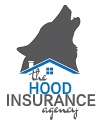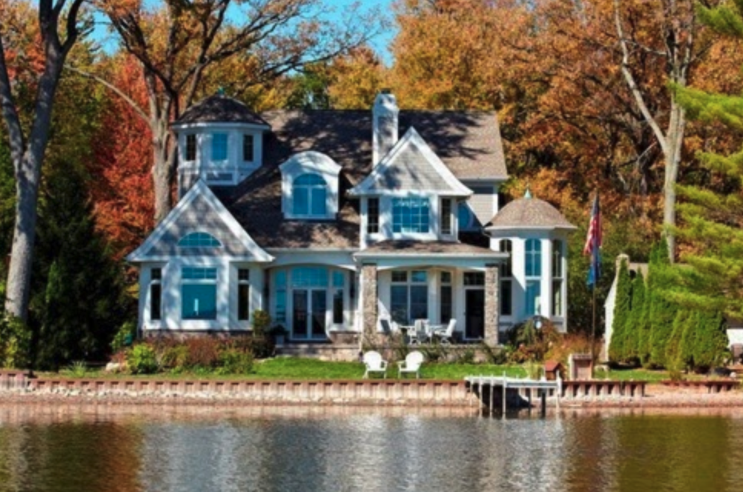The most critical part of any homeowners insurance policy is “Coverage A”. This is the maximum amount the insurer is willing to pay to rebuild or repair your home. It is important to understand that the cost to rebuild a home is rarely the same as the sale price, market value or loan amount.
There is little to no correlation between the cost to rebuild a home and its market value. This is because market value includes both land and structure, and the insurance company is only committing itself to rebuilding the structure. Thus, although the amount of land and the location of the property are both significant contributors to sales price/market value, they do not have a significant effect on the cost to build a structure on that land. Another way to think of this is to imagine two identical homes, one in downtown Bellevue or Seattle and the other out in rural Eastern Washington. The cost to build the home is roughly the same in either location – but the market value of the home is going to vary widely depending on that location.
Often, insurers are asked to provide insurance at least equal to the loan amount, or to the sale price. However, if the loan amount or sale price exceeds the estimated cost to rebuild the home, this would result in over-insuring the property. That means the homeowner would be paying for more insurance than they need, and thus it would be against the law for the agent to recommend. RCW 48.27.10 (4) states, “No person shall compel an insured or applicant for insurance to procure property insurance in an amount in excess of the amount which could reasonably be expected to be paid under the policy (or combination of policies) in the event of a loss, whether such insurance is required in connection with a loan or otherwise” (emphasis added).
If a home is destroyed, the insurer will rebuild that home. They will not pay off the loan, nor will the payout be based in any way on market value. An insurer is required to “make whole” the homeowner/insured, and that means replacing or repairing what was lost.
There are modifiers, or endorsements, to Coverage A that are offered by some insurers. The most common is “Extended Replacement Cost”. This endorsement will increase Coverage A by a given percentage, typically between 10% and 50%. Another endorsement, offered in WA state only by Hood Insurance Agency (to the best of my knowledge) is Guaranteed Replacement Cost. This endorsement states that although the amount listed in Coverage A is the estimated cost to rebuild the structure, the insurer is committed to rebuilding that structure no matter how much it may actually end up costing.
It may help to think of it this way: Coverage A represents the insurers best guess at the cost to replace the home, but if they are wrong, any overage (after any applicable Extended Replacement Cost coverage) is the homeowners responsibility. Guaranteed Replacement Cost shifts the risk of not having enough coverage to the insurer – if the insurer’s estimate is wrong, the insurer bears any additional cost.
Coverage B is the amount the insurer is willing to pay to replace or repair any separate structures (structures not connected to the primary residence) that are on the property. This includes things like sheds, detached garages, etc.
Coverage C is Personal Property coverage. Personal property is most easily thought of as the items you would take with you if you moved out. An insurer can either replace these at Replacement Cost (the cost to purchase a comparable item brand new from a store) or Actual Cash Value (the depreciated value of the item). Actual Cash Value is most simply thought of as the cost to purchase a comparable used item on Ebay or Craigslist.
Coverage D is Loss of Use. This endorsement specifies the amount the insurer is willing to reimburse you for costs you incur as a result of losing the use of your home. For example, if your home were destroyed, you would have to find somewhere else to live while your home was rebuilt. This would mean a few nights in a hotel as you searched for a rental home, then paying rent on the rental home until your residence was rebuilt. You might have a few meals at restaurants while staying in the hotel, probably have to use a commercial laundry service, etc. All of these expenses are covered under your Loss of Use endorsement.
As with any legal contract, “the devil is in the details”. Generally speaking, damage due to normal wear and tear is not covered, as it is considered to be part of home maintenance. This means that quite often, water damage due to leaks is not covered, among other things. Many policies also exclude damage to rodents and birds (but will cover damage from other animals).
Coverage for mold/mildew is usually limited. Jewelry is quite often limited unless it is specifically added to the policy in a “rider”. Remember, a policy is a legal contract. Your agent should point out some of the common pitfalls, but it is up to you to read the contract carefully and ask questions BEFORE something happens.
Our standard procedure here at The Hood Insurance Agency is to bring all of the available options to your attention, and help you choose which protections are right for you based on your personal situation and budget.
These are the primary parts of a homeowners policy. There are, of course, other endorsements available and the details of ALL endorsements vary from insurer to insurer. If you are unsure of what your policy covers, or you are concerned that the coverage you have may not be the coverage you need, don’t hesitate to contact us. We are always happy to review policies and assist you in creating the best, most cost-efficient policy for your unique situation.

